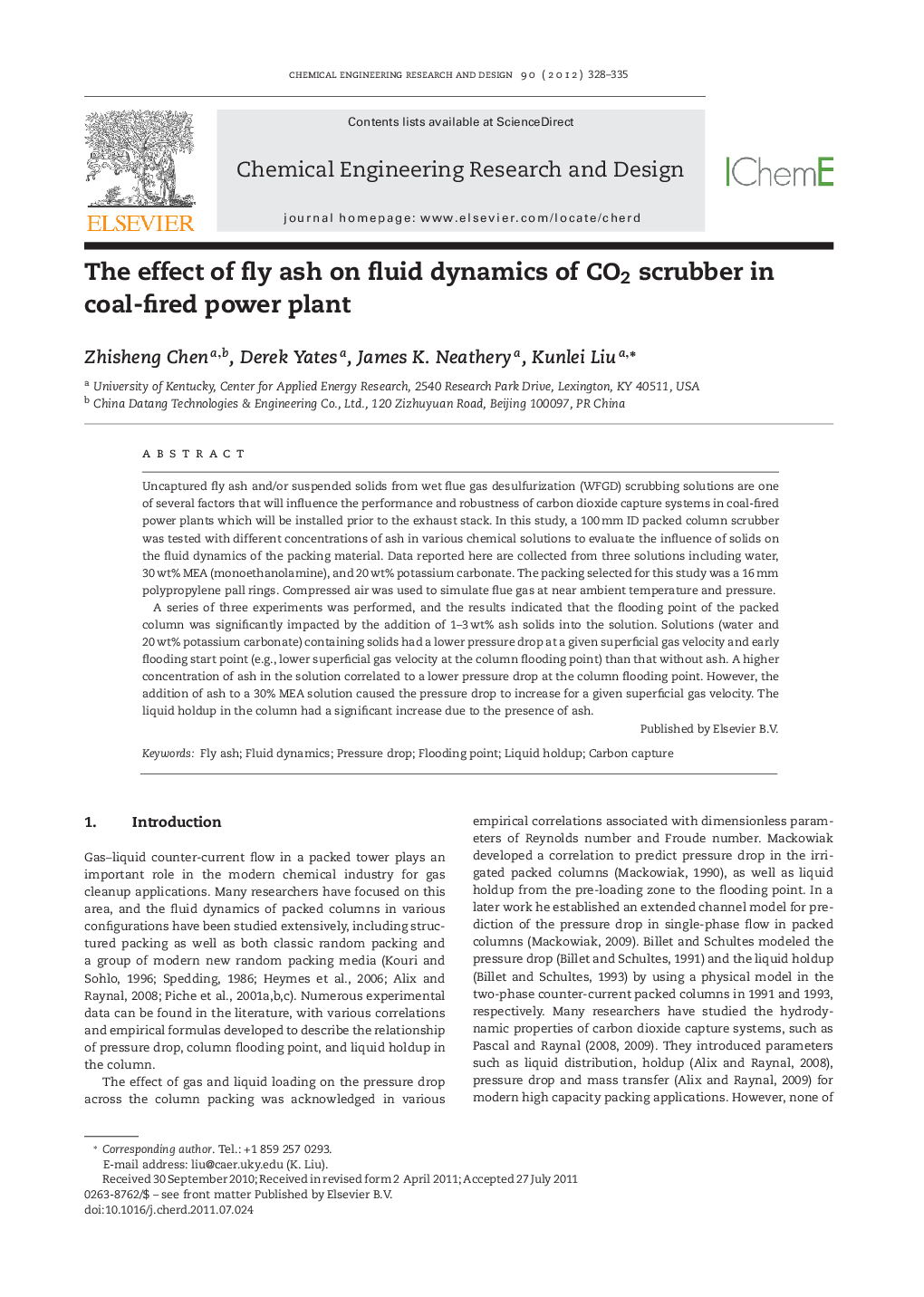| Article ID | Journal | Published Year | Pages | File Type |
|---|---|---|---|---|
| 621987 | Chemical Engineering Research and Design | 2012 | 8 Pages |
Uncaptured fly ash and/or suspended solids from wet flue gas desulfurization (WFGD) scrubbing solutions are one of several factors that will influence the performance and robustness of carbon dioxide capture systems in coal-fired power plants which will be installed prior to the exhaust stack. In this study, a 100 mm ID packed column scrubber was tested with different concentrations of ash in various chemical solutions to evaluate the influence of solids on the fluid dynamics of the packing material. Data reported here are collected from three solutions including water, 30 wt% MEA (monoethanolamine), and 20 wt% potassium carbonate. The packing selected for this study was a 16 mm polypropylene pall rings. Compressed air was used to simulate flue gas at near ambient temperature and pressure.A series of three experiments was performed, and the results indicated that the flooding point of the packed column was significantly impacted by the addition of 1–3 wt% ash solids into the solution. Solutions (water and 20 wt% potassium carbonate) containing solids had a lower pressure drop at a given superficial gas velocity and early flooding start point (e.g., lower superficial gas velocity at the column flooding point) than that without ash. A higher concentration of ash in the solution correlated to a lower pressure drop at the column flooding point. However, the addition of ash to a 30% MEA solution caused the pressure drop to increase for a given superficial gas velocity. The liquid holdup in the column had a significant increase due to the presence of ash.
► Ash particles present in the scrubber lowered the pressure drop of the packing materials at the flooding point. ► The flooding point of the packed bed column was significantly impacted with solutions containing ash. ► Ash particles influence the surface properties of the packing material, leading to a change in contact angle, thereby affecting the wetted area.
